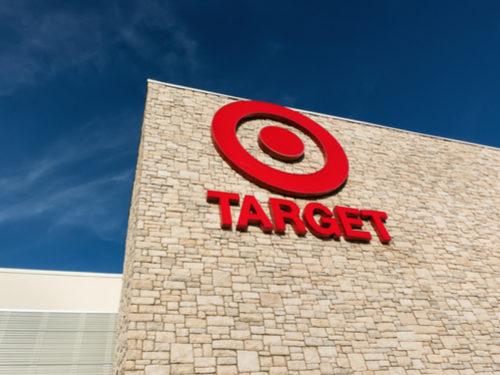
Visit Our Sponsors |
|
|
|
|
|
|
|
|
|
|
|
|
|
|
|
|
|
|
|
|
|
|
|
|
|
|
|
|
|
|
|
|
|
|
|
|
|
|

American retailers, school is in session. The teacher? Target Corp.
Yes, Target. The cheap-chic retailer — in distress just five years ago — has morphed into a model for how to avoid the retail apocalypse. Over that time, Chief Executive Officer Brian Cornell has overseen a $7 billion turnaround plan that includes opening and remodeling hundreds of stores, creating dozens of exclusive private-label brands and expanding the ways it gets its merchandise into shoppers’ hands.
The results, punctuated by the retailer’s near-perfect third quarter, have been notable. Target has now reported quarterly same-store sales growth of at least 3% for two straight years, along with wider profit margins in recent quarters. The stock is the best performer by far in the S&P 500 Retailing Index this year.
The performance has analysts agog, with Barclays saying the company is “firing on all cylinders,” and Moody’s Investors Service proclaiming it’s in “rarefied air.” Sanford C. Bernstein even entitled its latest note, “Best Company Ever?”
While that may be a bit of a stretch, it does show that Target’s playbook has some fundamental lessons for retailers in the Age of Amazon. And recent results from companies like Macy’s Inc., Gap Inc., J.C. Penney Co. and Kohl’s Corp. show that plenty of retailers need some schooling. The laggards blamed their woes on everything from unpopular products to unusual weather. But there’s no room for excuses this holiday season: Since the period between Thanksgiving and Christmas is six days shorter than last year, every day will have to count.
Of course, some other retailers are also doing well. Walmart Inc., Best Buy Co. and Costco Wholesale Corp. are gobbling up their fair share of the $100 billion in sales that Cornell has said is up for grabs in the wake of Sears Holdings Corp.’s bankruptcy and the demise of Toys “R” Us and other chains.
But Target is the best example of pulling off what consultant Toopan Bagchi, a former Target executive now with the Navio Group, calls “transforming while they perform.” This means getting the basics right while successfully preparing for an uncertain future. Here’s how Target is hitting the bullseye:
It’s turning its stores into destinations. Target has remodeled almost 300 locations this year alone, and will renovate more than 1,000 by the end of 2020. The easier-to-shop locations are delivering higher traffic and sales, and it appears the benefits are persisting well into the second and third years following improvements. The company has also opened more than 100 smaller stores in cities like New York and near college campuses to reach younger and more affluent customers.
Its products are in demand. Target’s design team has developed more than two dozen new in-house brands, with the retailer hitting paydirt on several of them. The women’s clothing line A New Day, for example, surpassed $1 billion in sales in just over a year. Target also has collaborations with celebrities like Chip and Joanna Gaines of the reality TV series Fixer Upper. The store brands deliver wider profit margins than national brands and the steady stream of launches keep customers coming back to see what’s new.
Its web strategy is working. Target’s digital development was stunted by a 2013 data breach, but it has come roaring back over the past two years by spending billions of dollars to improve and expand its e-commerce capabilities. The trick is to nudge shoppers toward store-pickup options like curbside that cost it much less and help to preserve profit margins. More than nine out of 10 shoppers in the U.S. are likely to grab online orders in the store to save money or time, according to a CommerceHub survey.
Finally, it’s avoiding distractions. Retailers today are carrying out lots of new initiatives “but they are not really executing them,” according to analyst Neil Saunders of GlobalData Retail. For example, he points to J.C. Penney’s fancy new concept store, which “does nothing to move the dial.” Target, meanwhile, has 25 mini-Disney stores that will capitalize on upcoming movie releases from Star Wars and Frozen.
Still, there’s room for improvement. Target’s grocery business has been a dud for years, and it has failed to transfer its brand-development magic to the food aisle. This is a missed opportunity, since sales of food sold under retailers’ store brands are growing twice as fast as products from national brands, according to Cadent Consulting Group. Target’s new grocery label, Good & Gather, could help in this area.
But the stumble is minor compared with the missteps of other retailers, which have included fashion misses, inventory buildups and a general failure to convince shoppers to leave their couches and head into the store.
“This winner and loser phenomenon will continue as we go into 2020,” Cornell said on Nov. 20, following the company’s earnings release. “It feels good to be planted in the winner’s circle.”
RELATED CONTENT
RELATED VIDEOS
Timely, incisive articles delivered directly to your inbox.






